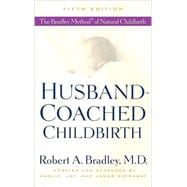
What is included with this book?
| Acknowledgments | p. ix |
| Preface to the Fifth Edition | p. xi |
| Preface to the Fourth Edition | p. xvii |
| Foreword | p. xix |
| Introduction | p. 1 |
| The Theory of Natural Childbirth | p. 8 |
| "It's Not Nice to Fool Mother Nature" | p. 16 |
| Where Do Fathers Fit in? | p. 43 |
| Preparation and First-Stage Labor What Do Animals Do? | p. 55 |
| Second-Stage Labor and Birth Squatting and Pushing | p. 89 |
| The Coach's Training Rules | p. 119 |
| How to Live with A Pregnant Wife | p. 147 |
| "Does My Wife Have to Be 'Cut' (Have an Episiotomy)?" | p. 178 |
| When Will the Baby Come? | p. 187 |
| Postpartum and Family Relations | p. 205 |
| Husband's Role in Breast-Feeding | p. 218 |
| The Nature of Instinct | p. 229 |
| Research Catches Up with the Bradley Method | p. 235 |
| Obstacles to Overcome | p. 242 |
| Pregnancy Loss | p. 250 |
| "Daddy Helped Born Me" | p. 255 |
| Nutrition in Pregnancy | p. 261 |
| Pregnancy Problems: Natural Prevention | p. 271 |
| Pregnancy Problems: Natural Healing | p. 284 |
| Bradley Moms' Perspectives and Stories | p. 293 |
| Bradley Dads' Perspectives and Stories | p. 307 |
| Photographing a Birth | p. 329 |
| Dad's Coaching Tips | p. 339 |
| Index | p. 351 |
| About the Authors | p. 361 |
| Table of Contents provided by Ingram. All Rights Reserved. |
The New copy of this book will include any supplemental materials advertised. Please check the title of the book to determine if it should include any access cards, study guides, lab manuals, CDs, etc.
The Used, Rental and eBook copies of this book are not guaranteed to include any supplemental materials. Typically, only the book itself is included. This is true even if the title states it includes any access cards, study guides, lab manuals, CDs, etc.
Excerpted from Husband-Coached Childbirth: The Bradley Method of Natural Childbirth by Robert A. Bradley
All rights reserved by the original copyright owners. Excerpts are provided for display purposes only and may not be reproduced, reprinted or distributed without the written permission of the publisher.